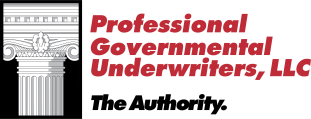Warning Signs To Observe to Prevent a School Shooting

How to Start a Police Department
September 12, 2022
Tips for Running a Successful Election Campaign
September 26, 2022Warning Signs To Observe to Prevent a School Shooting
There are many warning signs to observe to prevent a school shooting from occurring and saving some lives in the process. Teachers have to be wary and prepared for the worst. Ultimately, it is better to come up with a solution before something terrible happens.
Educational and community leaders, law enforcement departments, and state and federal governments have struggled to identify the best ways to provide safety for students and school staff.
Prevent a School Shooting: What to Know and What to Watch
Schools have allocated tax dollars to purchase active shooter/deadly weapon liability protection and provided security cameras. Additionally, they have implemented locking mechanisms and other safety systems. But the best way to prevent school shootings is to identify the warning signs of potential violence and address the problem before it becomes a tragedy.
Recent Problems With School Shootings
As educational institutions returned to in-person instruction in 2021, the incidents of gun violence on school property increased sharply. There were 193 incidents of gunshots in schools between August 2021 and May 2022, leaving 59 people dead and 138 injured.
Warning Signs to Watch
It is nearly improbable to predict when a school shooting might occur. However, studies of surviving participants in past school shootings have identified commonalities that may be warning signs for potentially violent behavior.
It is always essential to notice behavior that could lead to something worse. Moreover, students who display bullying behavior, particularly toward those of a different gender, race, religion, or sexual orientation, can be a red flag. Students who boast about access to or ownership of weapons, especially guns, are prone to following through. If authorities notice a student is displaying chronic isolation or feelings of loneliness, it is vital to communicate with them. Teachers should also monitor students who express thoughts of self-harm or anyone who has threatened others. There are also cases of students who reference a plan that may involve violent actions. Likewise, it is prudent to check on them, especially if they are the type that is quick to anger, irritability, or impatience. If students display withdrawal from family and friends, that could be a sign of trouble.
What Communities Can Do
The task of preventing school violence cannot lie solely with the schools. Communities must play a role in identifying the warning signs and providing structure and support to act on them, including active shooter/deadly weapon liability protection. There are two primary functions that communities can serve.
- Prevent potential shooters from obtaining firearms. Sensible gun acquisition, access and storage laws, and appropriate background checks for gun purchases are all needed. A better system to prevent illegal access to firearms is also an essential step in prevention.
- Provide support for and access to professional security and mental health interventions to help schools prevent potentially violent incidents when warning signs are detected. Specific services include programs for crisis intervention, active shooter insurance, security upgrades to schools and classrooms, and trauma-informed planning protocols for school-based staff and local law enforcement.
Schools should be safe for students to learn without the looming threat of gun violence. By focusing on the warning signs, keeping guns inaccessible to those who would use them for harm, obtaining deadly weapon coverage, and equipping schools with the tools they need for successful intervention, we can provide students with a secure learning environment.
About PGUI
Professional Governmental Underwriters, LLC., is a full-service risk management company dedicated to assisting public, educational and non-profit entities in the management of their professional liability exposures including educators liability insurance. We are dedicated to providing state-of-the-art professional underwriting management and loss control advisory services on behalf of our designated carriers. For more information, call us toll-free at (800) 586-6502.


